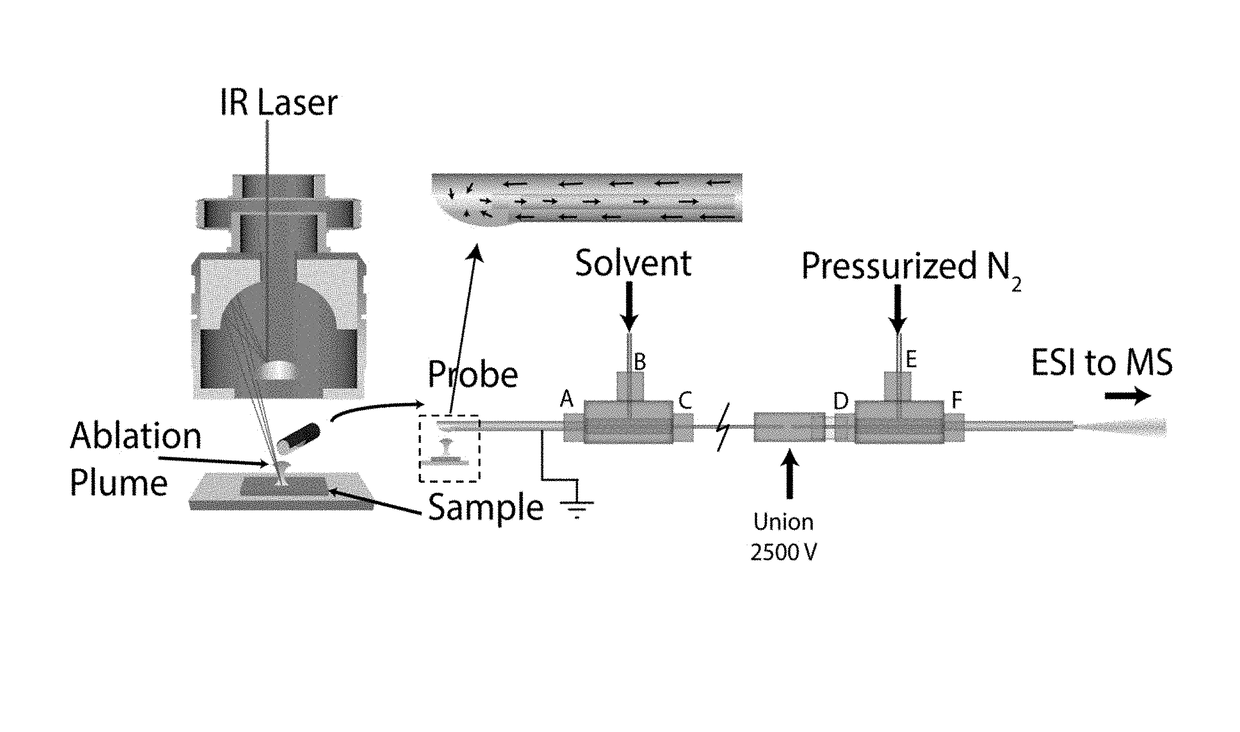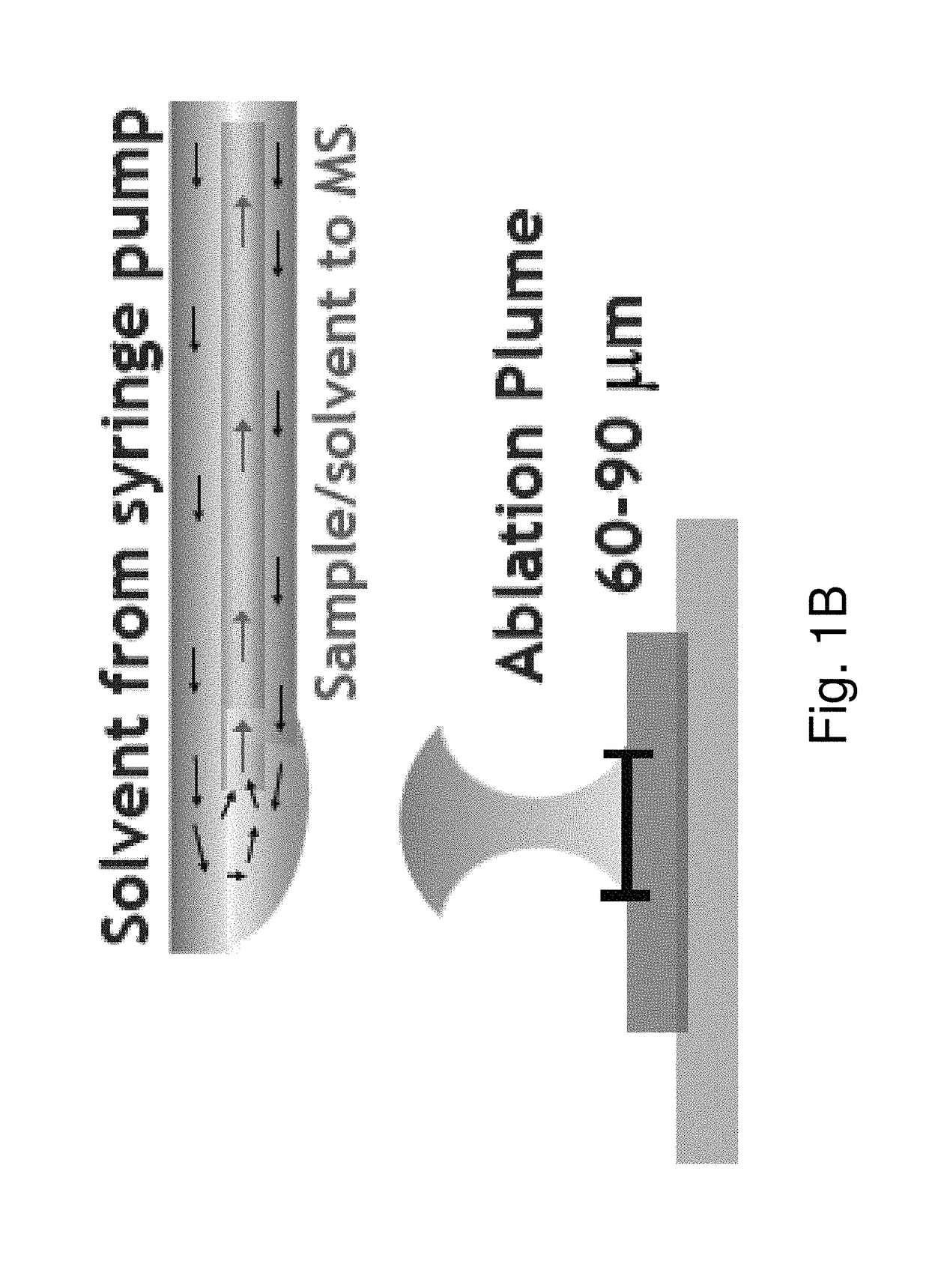Ambient infrared laser ablation mass spectrometry (AIRLAB-MS) with plume capture by continuous flow solvent probe
a laser ablation and mass spectrometry technology, applied in the field of laser ablation and mass spectrometry, can solve the problems of not providing unambiguous chemical information, tagging molecules with fluorophores often requires extensive sample preparation, and dreaded analytical challenges. achieve the effect of higher nicotine levels
- Summary
- Abstract
- Description
- Claims
- Application Information
AI Technical Summary
Benefits of technology
Problems solved by technology
Method used
Image
Examples
example 1
Laser Ablation Mass Spectrometry
[0037]Laser Ablation Mass Spectrometry.
[0038]The ambient infrared laser ablation mass spectrometry (AIRLAB-MS) instrumentation consists of four major components; an Opolette tunable infrared laser (Opotek, Carlsbad, Calif.), a Continuum XL infrared microscope (Thermo-Fisher, Waltham, Mass.) with a reflecting objective, a home-built continuous flow probe and electrospray ionization (ESI) emitter, and a home-built 7 T FT / ICR mass spectrometer. A schematic diagram of the experimental setup that includes the reflecting objective, continuous flow probe and ESI emitter is shown in FIG. 1A.
[0039]The infrared microscope is equipped with a 15× reflecting objective which is used to focus 2.94 μm light from the IR laser. The power of the laser at the sample stage is 12 mW, measured over 30 s with a pulse repetition rate of 20 Hz. The laser spot, estimated from burn marks on photographic paper, is circular with a diameter of ˜60 μm corresponding to an energy dens...
example 2
Application to Tobacco Plant Varieties and Nicotine Distribution
[0053]Chemical Composition of Tobacco Varieties.
[0054]Four genetically different tobacco plants; Petite Havana (P H), John Williams (J W), Glurk (GluC) and John Williams variety with truncated light antenna (TLA) plants were cultivated and the chemical composition of individual leaves from each plant (4th leaf from the top) was analyzed by solvent extraction followed by mass spectrometry. The positive ion ESI mass spectrum for each sample has ions at m / z 799.41, 815.39 and 961.44 (FIG. 3), and from comparison of the measured masses to a tobacco plant metabolite database53 and studies reporting extraction of these compounds from similar tobacco plants,54 these ions are identified as diterpene glycosides, Lyciumoside IV, II and VII, respectively. These ions are significantly more abundant for GluC and P H than for J W and TLA. There is a distribution of ions from m / z ˜690-710 in the mass spectra for GluC and P H with slig...
PUM
 Login to View More
Login to View More Abstract
Description
Claims
Application Information
 Login to View More
Login to View More - R&D
- Intellectual Property
- Life Sciences
- Materials
- Tech Scout
- Unparalleled Data Quality
- Higher Quality Content
- 60% Fewer Hallucinations
Browse by: Latest US Patents, China's latest patents, Technical Efficacy Thesaurus, Application Domain, Technology Topic, Popular Technical Reports.
© 2025 PatSnap. All rights reserved.Legal|Privacy policy|Modern Slavery Act Transparency Statement|Sitemap|About US| Contact US: help@patsnap.com



